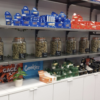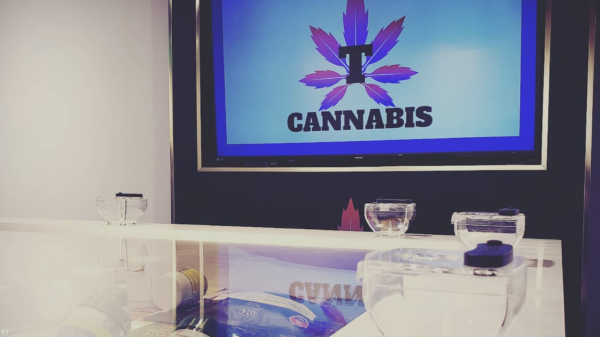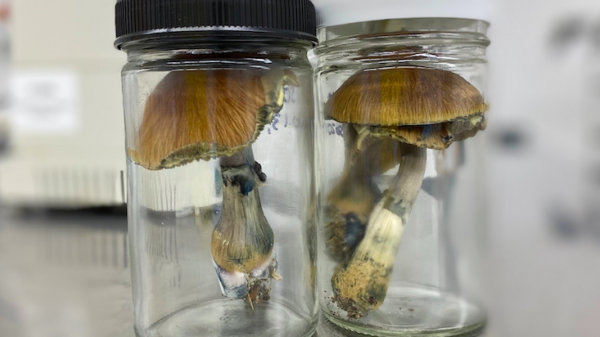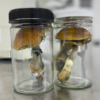Teenagers today are breaking away from the traditional youth vices of old.
Rates of opioid, cigarette and alcohol use continue to decline for American teens while rates of vaping cannabis and nicotine are on the rise, according to a study released Wednesday from the U.S. National Institute of Health.
The highly anticipated 2019 Monitoring the Future study surveyed 42,531 teens in Grade 8, 11 and 12 from 396 public and private schools across the country and found cannabis remains teenager’s drug of choice, while the use of other illicit vices are on the decline.
“We are heartened to see the continuing decline in the use of many drugs, particularly non-medical use of prescription opioids. However, teens are clearly attracted to vaping products, which are often concentrated amounts of drugs disguised as electronic gadgets,” National Institute on Drug Abuse director Nora Volkow said in a statement.
“Their growing popularity threatens to undo years of progress protecting the health of adolescents in the U.S.”
Rates of cannabis vaping rapidly rising
Vapes are crazy popular.
The number of Grade 12 students who reported vaping cannabis within the past month doubled in the past year to 14 per cent, up from 7.5 per cent in 2018, according to the study. That’s the second largest one-year jump ever tracked for any substance in the history of the survey, which has been surveying youth since 1975.
The largest recorded year-over-year substance use jump was from 2017 to 2018 with nicotine vaping among Grade 12 students.
The number of students who reported vaping cannabis in the past year has also more than doubled in the past two years. Just below 21 per cent of Grade 12 students, 19.4 per cent of Grade 10 students and seven per cent of Grade 8 students reported vaping cannabis in the past year, according to the study.
This is the survey’s first year collecting data on daily cannabis vaping, which 3.5 per cent of Grade 12 students, three per cent of Grade 10 students and 0.8 per cent of Grade 8 students reported doing.
Cannabis may be on the rise but recreational use of prescription and illicit drugs are on the decline.
Less than four per cent of Grade 12 students reported using LSD, synthetic cannabinoids, cocaine or MDMA within the past year, respectively, and only 0.4 per cent reported trying heroin. Recreational use of prescription drugs was also down, with Grade 12 students reporting a declining use of Oxycontin, Vicodin and Adderall, according to the study.
Regular cigarette use has fallen to 5.7 per cent of Grade 12 students from 13.6 per cent five years ago.
Alcohol use and binge drinking rates have also decreased over the past five years for Grade 12 students. Just over 50 per cent of high school seniors drank in the past year, and rates of binge drinking fell to 14.4 per cent from 19.4 per cent in 2014.
Binge drinking is defined as five or more drinks in a row in the past two weeks, according to the study.
Declining drug use among teens doesn’t mean vapes are safe
While the news that teens are reducing their use of dangerous vices might seem promising, the potential danger of vape products shouldn’t be overlooked.
Read more: Newfoundland and Labrador follows Quebec’s ban on weed vapes
The ongoing vape crisis and clinical explanations for patients with e-cigarette, or vaping, product use-associated lung injury, or simply EVALI, are still being investigated.
As of Dec. 3, 2019 48 patients have died and 2,291 patients have been hospitalized with EVALI.
And these patients are young. The median age is 24-years-old, the youngest patient is 13-years-old and 16 per cent of patients are teens, younger than 18-years-old, according to the Centers for Disease Control and Prevention website.
“THC-containing products continue to be the most commonly reported e-cigarette, or vaping, products used by hospitalized EVALI patients; 80 [per cent] reported any use of these products in the three months preceding symptom onset,” the CDC website reads.
Dank Vapes, a name used by counterfeit packaging that doesn’t actually link to a single company, was the most commonly-reported THC-containing vape used among patients, according to the CDC.
Earlier this month, the CDC reported nicotine-based vapes and e-cigarettes have not yet been linked to EVALI cases, suggesting the illnesses have been caused by illicit cannabis vape products containing vitamin E acetate.
Read more: Canopy Rivers, 4Front, Leafly and 800 Pot Firms Lobby For Cannabis Descheduling Amid Vaping Crisis
Cover art: modified “Teenagers at Play” by Alex Proimos from Wikimedia Commons, Creative Commons Attribution 2.0 Generic.
michelle@mugglehead.com
@missmishelle














